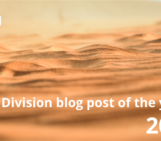Science communication has become a common focus of many aspects of academic research and teaching. Despite becoming more prevalent in recent years it has a long and deep rooted history, which goes hand in hand with scientific discovery. In this blog post, Sam Illingworth, gives a brief outline of the history of science communication.
Science Communication is a phrase that seems to permeate into many facets of our lives as scientists and educators, and indeed it has featured prominently in many of these posts. However, what is it and where did it come from?
The word ‘science’ itself derives from the Latin word ‘scientia’, meaning knowledge. So to communicate science is effectively to communicate knowledge, and at its most basic level science communication can be thought of as those in the know informing those that are not. In Ancient Greece this imparting of knowledge took place in public debates, where understanding and thought were deliberated by the masses. This democratisation of knowledge and inquiry ultimately led to the dawn of experimentation and to the advancement of philosophy and science.![This early wooden printing press could spit out 240 impressions per hour (Photo Credit: Jost Amman [Public domain], via Wikimedia Commons)](https://blogs.egu.eu/geolog/files/2015/01/History_2-233x300.jpg)
This early wooden printing press could spit out 240 impressions per hour (Photo Credit: Jost Amman [Public domain], via Wikimedia Commons)
The British Science Association (BSA) was set up in at the beginning of the nineteenth century, mainly to address the fact that science in the UK was in a somewhat laconic state. The first meeting was held in York on the 26 September 1831, where one of the aims of the society was declared to be: “to obtain a greater degree of national attention to the objects of science.” The association also inspired the formation of similar associations for the advancement of science in other countries, and have continued to have annual meetings ever since. Perhaps the best remembered of all these meetings was at Oxford in 1860, where the English biologist Thomas Huxley debated Darwinism with the then Bishop of Oxford, Samuel Wilberforce. Huxley’s speech ended with him stating that he was not ashamed to have a monkey for his ancestor, but that he would be ashamed to be connected with a man who used great gifts to obscure the truth; a reference to the oratory skill, yet perhaps clouded judgement, of his religious opponent.
![Thomas Henry Huxley: Communicating for Science (Photo Credit: Lock & Whitfield [Public domain], via Wikimedia Commons)](https://blogs.egu.eu/geolog/files/2015/01/History_3.jpg)
Thomas Henry Huxley: Communicating for Science (Photo Credit: Lock & Whitfield [Public domain], via Wikimedia Commons)
With the advent of citizen science, and crowdsourcing (more of which can be read about here), the general public are now in a position where they are not only choosing what they want to be informed about, but are taking an active role in the pursuit of this knowledge. As scientists, we have to ensure that it is not now us that are left behind.
By Sam Illingworth, Lecturer in Science Communication, Manchester Metropolitan University

![Debating, Ancient Greece style (Photo Credit: Raphael [Public domain], via Wikimedia Commons)](https://blogs.egu.eu/geolog/files/2015/01/History_1.jpg)



Pingback: Internet a changé la Science – Fête de la Science | Get URL Youtube
Pingback: » What’s up? The Friday links (70)